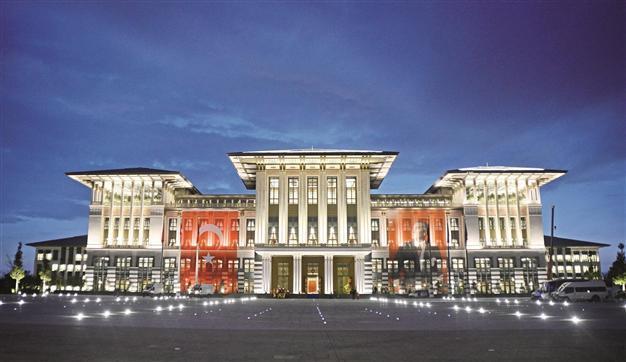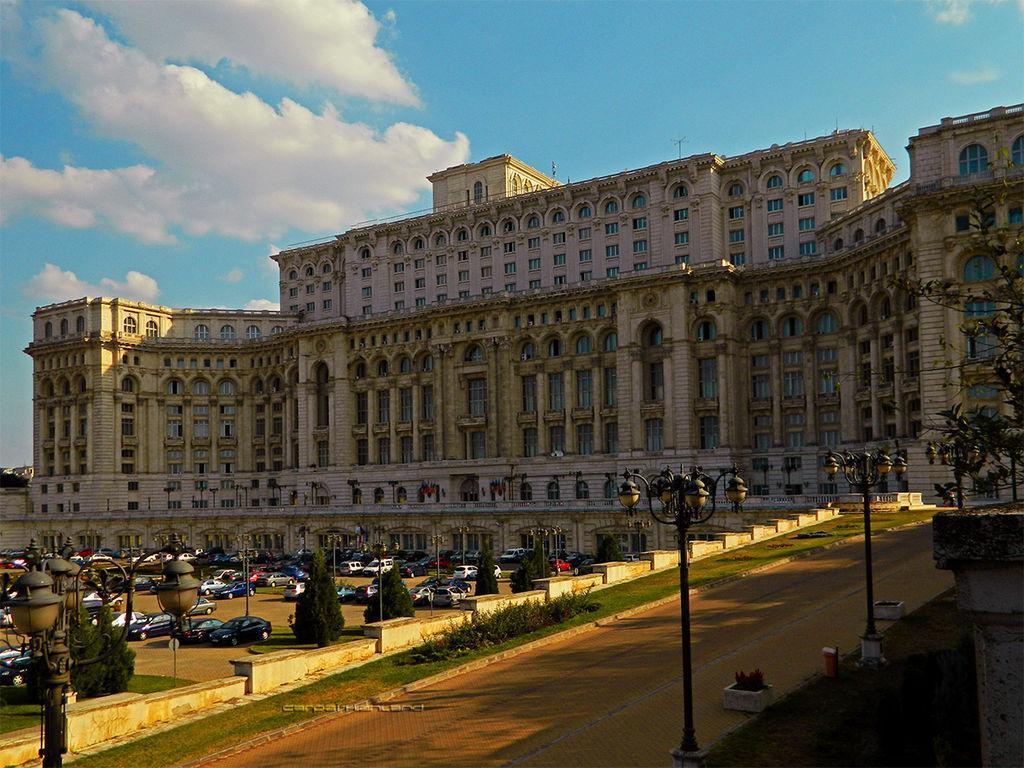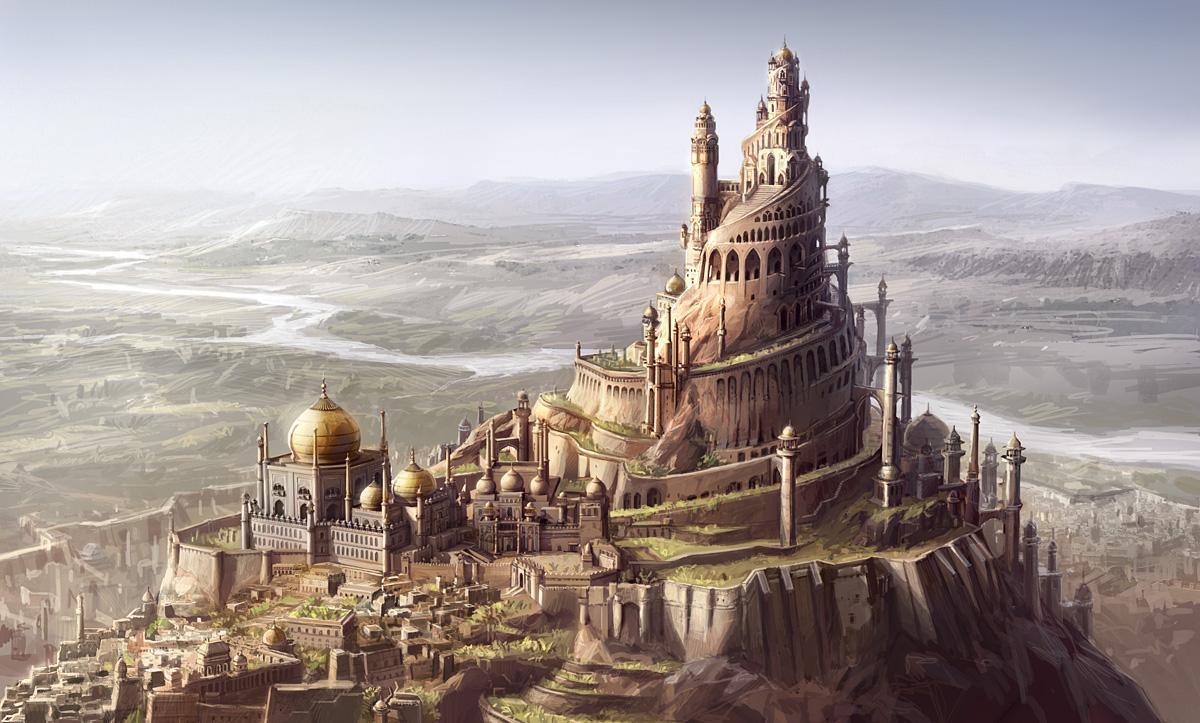Erdoğan's 'Ak Saray' likened to Alamut Castle, Ceausescu’s Palace
Bülent Sarıoğlu - Umut Erdem - Erdinç Çelikkan / ANKARA

Opposition parties have ramped up their objection to Turkey’s newly inaugurated presidential palace, set to cost more than half a billion Turkish Liras, likening the gargantuan complex to Romanian dictator Nicolae Ceauşescu’s People’s Palace or Hassan al-Sabbah’s castle of Alamut.
The construction of the sprawling edifice has become a divisive issue between lawmakers from the ruling Justice and Development Party (AKP) and opposition parties.
“The project of the new building is an adaptation of the palace which Ceauşescu had built in Bucharest for himself, but couldn’t even reside for a single day. It is an adaptation both in regards to the project and in regards to the mentality,” Ankara deputy İzzet Çetin of the main opposition Republican People’s Party (CHP) said during commission-level debates late on Nov. 4.
Amid the debates sharply dividing public opinion, President Recep Tayyip Erdoğan held separate meetings with Prime Minister Ahmet Davutoğlu, Chief of General Staff Gen. Necdet Özel and National Intelligence Organization’s (MİT) Undersecretary Hakan Fidan yesterday. As a requirement of his post, it was the first time he held the regular weekly meetings at the new Presidential Palace instead of the traditional Çankaya Palace.
Earlier this week, during ongoing deliberations over the 2015 Central Governance Budget Law at the Parliament’s Planning and Budget Commission, Finance Minister Mehmet Şimşek announced that the total value of the project was expected to reach $615 million and that a new presidential jet would be bought for $185 million.
“Some $432.7 million has been paid for the construction of the new presidential palace as of now, and some $135 million will be allocated for the palace in 2015,” Şimşek said.
Nonetheless, experts have argued that the figures provided by Şimşek were not realistic, given the size of the project as well as the material being used.
“The official cost may be 1 billion and 370 million lira, but there will be more spending. If they are announcing such a cost, then they should also provide the allowances being paid for each item. If these items are made public, then it will be revealed that the cost is much higher,” said Tezcan Karakuş Candan, the head of Ankara branch of the Chamber of Architects. While recalling that the construction of the residence and the mosque inside the premises had not yet been completed, Candan suggested that real cost would eventually exceed 2 billion liras.
“We believe that the cost of this palace is beyond 2 billion liras. The cost will increase with the new spending,” Candan said.
The head of Chamber of Architects, Eyüp Muhçu, meanwhile, drew attention to the fact that the cost per meter square of the project was around 1,000 liras, much higher than average.
During commission-level debates on next year’s parliamentary budget late on Nov. 4 and during a General Assembly session extended to the early morning yesterday, the topic led to testy arguments between lawmakers.
Nicolae Ceausescu's "People's Palace" in Bucharest
Çetin said the complex – nicknamed the “Ak Saray” (White Palace) – covering an area of 200,000 square meters, with a three-story residence for President Recep Tayyip Erdoğan and his family, had initially been planned as a prime ministry when he was still prime minister, but its proposed function changed when he ran for the presidency.
“Ceauşescu couldn’t live in that palace. This man built this building for the prime ministry and he would still reside there if he had remained the prime minister. How can I show respect for him as the president if he continues excluding 50 percent of the people and acts like a roughneck?” Çetin asked.
Davutoğlu is to move into downtown Ankara’s Çankaya Palace, which was once home to the founder of the Republic of Turkey, Mustafa Kemal Atatürk. Critics widely suggest the new presidential premises is striking evidence of Erdoğan’s increasingly domineering stature after more than a decade at the helm of Turkish politics, while opposition parties suggest that the premises was built without permission, with CHP leader Kemal Kılıçdaroğlu vowing to call the building the “Unlicensed Palace,” not “Ak Saray.”
“People have already become used to call this building the ‘Unlicensed Palace,’” Nationalist Movement Party (MHP) Manisa deputy Erkan Akçay said.
“And I will call it ‘the Castle of Alamut’ if this stance of the government continues. I will explain it to you later; it explains the Castle of Alamut where the leader of the assassins, Hassan al-Sabbah, resided,” Akçay said, while portraying Çankaya Palace as the symbol of the Turkish nation’s War of Independence against imperialist powers.
 A fictional image of Alamut Castle from "The Prince of Persia." The historical castle in Iran was destroyed by the invading Mongols in the 13th century.
A fictional image of Alamut Castle from "The Prince of Persia." The historical castle in Iran was destroyed by the invading Mongols in the 13th century.  Opposition parties have ramped up their objection to Turkey’s newly inaugurated presidential palace, set to cost more than half a billion Turkish Liras, likening the gargantuan complex to Romanian dictator Nicolae Ceauşescu’s People’s Palace or Hassan al-Sabbah’s castle of Alamut.
Opposition parties have ramped up their objection to Turkey’s newly inaugurated presidential palace, set to cost more than half a billion Turkish Liras, likening the gargantuan complex to Romanian dictator Nicolae Ceauşescu’s People’s Palace or Hassan al-Sabbah’s castle of Alamut.
